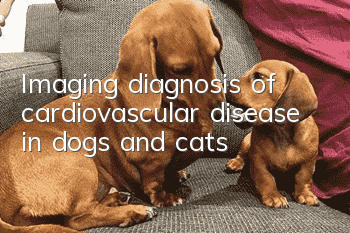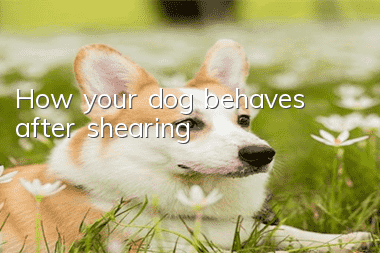Imaging diagnosis of cardiovascular disease in dogs and cats

Basics of chest X-ray diagnosis
1. Photography requirements
Lateral view during maximum inhalation and V-D or D-V imaging and oblique images during maximum inhalation.
a. Photography range: 2cm from the head side of the first rib to the tail side of the first lumbar vertebra
b. Exposure time: 1/30, preferably 1/60 second
c. Line volume: Moderate. If it is insufficient, the density of the lung field will appear to increase. If it is too high, the shadow of the blood vessels will not be obvious, which is not conducive to the ideal lateral photography of the lesion. The shadow of the spinous process of the cephalad thoracic vertebrae will be vaguely visible.
d. Lateral image: The animal is lying on its side, and the two forelimbs are parallel to each other before being pulled and Baoding, so that the deltoid muscle does not overlap with the tip of the lung lobe. On the premise that the thorax does not twist to the beam, the sternum and thoracic vertebrae are kept at the same height; the neck is extended straight forward, At least the center of the X-ray beam that cannot be bent should be aligned with the caudal side of the lunate bone and the fifth intercostal space. There is only a slight difference between the left and right sides. When lying on the right side, the pericardial diaphragm ligament can prevent the apex of the heart from being displaced downward, so the right side is used. It is better to stay in bed.
e.V-D image: The animal is lying on its back, the two forelimbs are pulled forward, the sternum and thoracic vertebrae coincide, and the center of the X-ray beam is aligned with the caudal edge of the scapula.
f.D-V image: The animal lies prone in Baoding, abducting the elbow and pulling the two forelimbs slightly forward. The hocks of the hind limbs land on the platform in a flexed state, keeping the thorax from rotating and allowing the thoracic vertebrae to overlap the sternum.
Chest X-ray Anatomy
h. Anterior lobe pulmonary artery
i. Anterior lobe bronchi
j.Anterior lobe pulmonary vein
l.Left posterior lobe blood vessels
e. Posterior vena cava
f. Banner film right foot
g. Diaphragm left foot
G. Right anterior lobe pulmonary artery
H. Right anterior lobe bronchus
I. Right anterior lobe pulmonary vein
m. Right posterior lobe pulmonary artery
n.Right posterior lobe bronchus
O. Right posterior lobe pulmonary vein
J. Left anterior lobe pulmonary artery
K. Left anterior lobe bronchus
L. Left anterior lobe pulmonary vein
p.Left posterior lobe pulmonary artery
q.Left posterior lobe bronchus
r.Left posterior lobe pulmonary vein
Cardiovascular disease diagnosis
1. Pulmonary artery and pulmonary vein
The thickness of the pulmonary artery and pulmonary vein distributed in the anterior lobe is basically the same under normal circumstances, and the thickness of each is roughly the same as the second rib.
When the pulmonary artery is observed to be thicker than the feeding vein, it may be suspected that it is a ventricular coloboma, patent ductus arteriosus, atrial septal defect, or heartworm obstruction of the terminal pulmonary artery that causes increased pulmonary artery blood flow.
When the pulmonary veins are observed to be thicker than the pulmonary arteries, it may be mitral regurgitation causing pulmonary vein congestion.
2. Aorta and posterior vena cava Under normal circumstances in X-rays, the diameters of the aorta and posterior vena cava are basically the same.
The twisting of the posterior vena cava may be suspected to be tricuspid regurgitation that causes obstruction of the vasoconstriction, and the thickening of the aortic arch may be aortic stenosis with posterior dilatation of the stenotic part.
Heart
(1) Simple method for measuring heart shadow
1. Lateral image: Normally, the maximum transverse axis of the heart in dogs is within 3 ribs; in cats, it is within 2 ribs.
2 D-V or V-D image: less than 1/2 of the maximum transverse diameter of the thorax at the ninth thoracic vertebra.
(2) V-D image heart size measurement method
a+b
——x l00(%)
A+B
Normal: 65-75%
(3) Lateral image method for measuring heart size Lateral image VHS method
Normal: 8.5-10.5 thoracic vertebrae
(4) The significance of various parts of the shadow of the Lateral heart and its abnormal changes
Lateral image
4-8 points (1) reflect changes in the right ventricle;
8-11 points (2) reflect changes in the right atrium and pulmonary artery;
11-12 Note (3) reflects changes in the aortic arch;
1-2 points (4) reflect changes in the left atrium;
3-5 points (5) reflect changes in the left ventricle;
(5) The significance of various parts of the V-D image heart shadow and its abnormal changes
V-D image
6-9 points (1) reflect changes in the right ventricle;
9-11 o’clock (2) reflects changes in the right atrium;
Taking 12 o'clock as the center (3) to reflect the changes of the aortic arch;
1-2 points (4) reflect changes in the pulmonary artery;
2-3 points (5) reflect the changes in the sitting auricles;
3-5 points (6) reflect changes in the left ventricle;
Case
3. Trachea
Normally, the trachea, aortic body, and posterior vena cava are about the same thickness
Chest tracheal narrowing: tracheal dysplasia or tracheal collapse (atrophy) may be suspected;
Thickening of the trachea in the chest: There may be respiratory disorders such as asthma.
For X-ray diagnosis of respiratory diseases, you should always consider comparing the bronchial and vascular shadows in the lung fields with normal X-ray anatomy images.
In the lateral chest image, the shadow of the pulmonary artery distributed in the posterior lobe is always dorsal to the left posterior lobe artery and to the right posterior lobe artery.
Recommended Good Things
Aineng Pet Odor Eliminating Disinfectant can effectively remove body odor/feces odor and other odor molecules! Effective in treating skin diseases caused by fungi/bacteria! Can kill parvovirus/canine distemper virus/coronavirusetc!
It is edible grade for pets, does not contain fragrances, does not contain chemicals, can be sprayed directly, and is harmless to human pets!
Consultation: 13028809308 (WeChat synchronization)
Scan the QR code on WeChat to enter the purchase
- How to better train a Border Collie? A must-read for novices!
- A dog's increased appetite is not just for body growth, it may be sick itself!
- What should I do if my dog gets injured in a fight? Scratches and bites make a big difference
- The most painful time for male dogs after neutering surgery
- How to raise a Husky? Husky Breeding Guide!
- How is dog coronavirus transmitted?
- What to do if your dog vomits undigested food
- How much does a Jingtian Beast cost? Is it easy to raise? Appearance and characteristics of Jingtian Beast_Pictures
- Causes and solutions of pet tear stains
- Gastric tube administration



